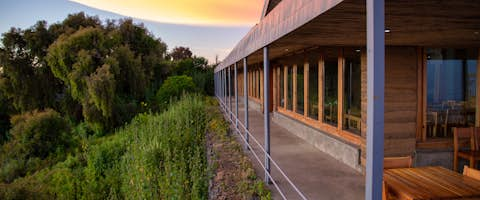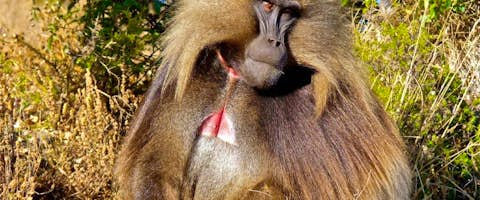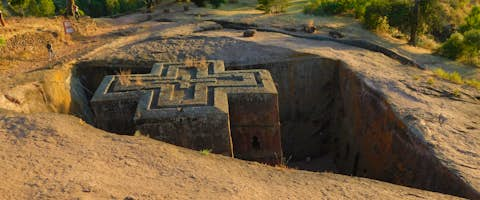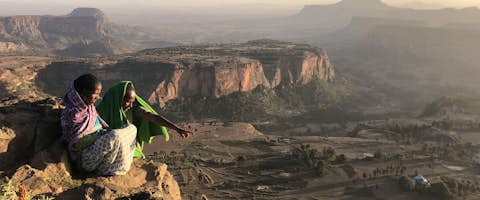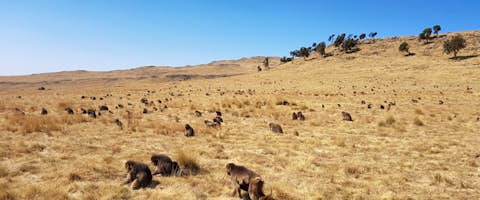The Walia Ibex
The combination of poaching and habitat loss from agricultural expansion have led to a sharp drop in the numbers of Walia Ibex left in the wild.
The animals have a white belly, a brown coat, and large, backwards-reaching horns - often more than a metre in length.
The horns are used for fights between males for dominance, where horns clash with incredible force. Females also have horns, but they are smaller. Males weigh between 80 and 125 kilograms.

Walia Ibex wandering the Simiens.
Walia Ibex are social animals that live in herds of 5 to 20, although the more mature males often partially detach from the main group and only fully return to the herd for mating season. This generally takes place in late autumn and early winter.
Their habitat is mountain forests and grassy subalpine plains, and they spend their days grazing on a mix of herbs, shrubs, grass and other vegetation, often travelling up to 2 kilometres per day in search of food.
Walia Ibex are one of a number of fascinating animals to be found in the Simien Mountains - whose dramatic contours were described by Homer as the ‘chess pieces of the gods’ - with others including mountain Nyala, Gelada Monkeys and Ethiopian Wolves.


Brilliant says
While endangered, efforts are being made to boost their numbers, and tourism has a role to play. By providing a steady stream of revenue and employing local people, tourism incentivises the preservation of natural environments rather than their destruction for economic purposes.



